
RogueRose - 27-10-2016 at 03:46
When it gets colder out I try to do heat intensive stuff because it is more comfortable. These processes tend to use a lot of heat and in most
processes a lot of heat is lost to the enviornment. I was wondering if anyone has come up with something to absorb heat surrounding these processes
(sides and above mainly) and use it for either heating water or something else.
I have an unfinished basement and do work outside but it would be easy to run a pipe into the basement to a drum to hold water or oil (maybe oil as
the transfer fluid and water as the storage medium). I was thinking a car radiator may be an easy choice for moving heat from the drum to the
basement other than allowing it to radiate out naturally as it cools. I'm also curious as to how much the first level would benefit from this as any
hear should travel upwards to the basement ceiling and first level floor. The basement walls are drywalled but floor is concrete.
My forges that are 4" walls thick of masonry refractory can get to a dull red glow after an hour at high heat and I am making a new one and was
considering placing metal tubing coiled in the walls and running oil (probably mineral) through it to pump heat away and store it - if this is
plausible.
As far as absorbing the heat from above the reaction "vessel" on the sides and top, I was thinking of something like an inverted funnel so it has a
chimney in the center and to allow good air flow. The funnel could have metal tubing as well. I was also considering using old air conditioner
radiators or dehumidifier radiators possibly modifying the flow pattern from serial flow throughout the unit to parallel flow (instead of a long 30ft
snake like flow with 30 12" continuous pipe crossings it would have 15 2ft lengths running the length and looping back) allowing flow to be slower
and much less cumulative resistance in the process. These could work as the heat exchanger in the barrel as well as above the heat source possibly
(little worried about the Al fins but with fluid extracting heat it may be alright).
Well I know a lot of you do metal working and other non-chemistry stuff or make waste oil burners and such (at least I've seen some posts related to
such) and wanted to know if anyone ever did anything like this and had ideas.
Here are some pics of forges and a rocket stove (3rd pic). I have some others that are similar to these but those show the idea. Rarely is there a
wild open fire like a camp fire or a burn barrel but a much more consolidated flame at higher temps. In most of these exhaust velocity may be a
factor in collecting the heat.
Note I also will have a large forge from bottom half of a 55 gal drum - like the last pic but much larger.
[Edited on 27-10-2016 by RogueRose]
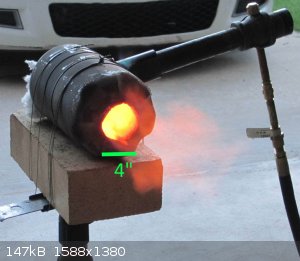
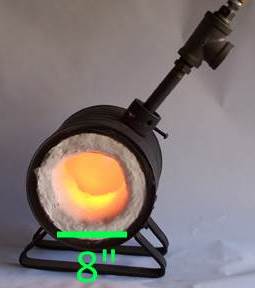
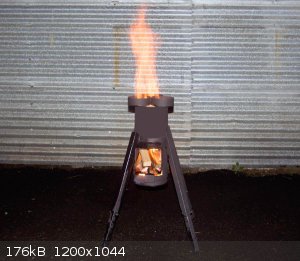
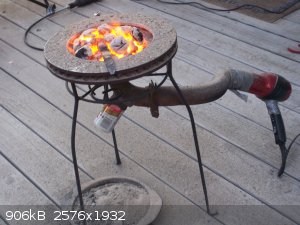
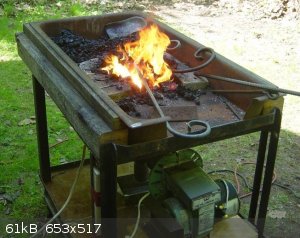
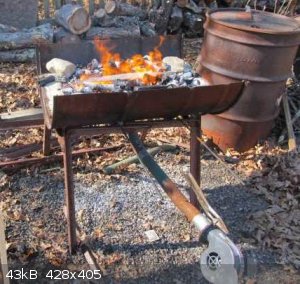
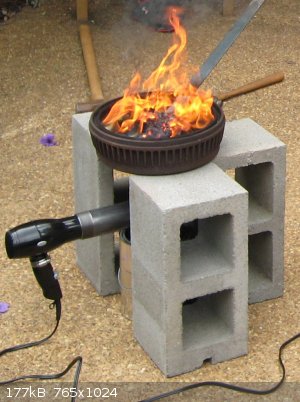
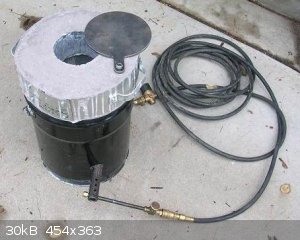
[Edited on 27-10-2016 by RogueRose]
Sulaiman - 27-10-2016 at 03:56
A forge or a kiln ?
If it is for a kiln then I think that any extra investment should be in insulation.
i.e. a perfectly insulated kiln would require negligible power to maintain insane temperatures.
RogueRose - 27-10-2016 at 06:49
I don't have a kiln but it could be useful for a number of things and pottery would be fun. Maybe years down the road...
in case it matters fuels are: wood (scrap lumber - super dry & split "cord" wood), charcoal, coal, waste oils/fats (vege & motor), propane.
Air flow/speed ranges from natural draft up to leaf blowers (w/ speed controller) and or compressed air (for oil aspiration).
I'm thinking something like a fume hood or over-oven/range exhaust setup. Maybe not equipment made for that but modeled after it.
The reason i'm interesed in this is I think I could heat my house for 2-3 days during a long copper casting process or when doing a lot of aluminum -
as well as doing metalwork/smithing.
Magpie - 27-10-2016 at 08:55
Run the exhaust gases through an air-to-air heat exhanger then force the heated air into your basement using a small in-line fan.
My uncle had a fireplace in his basement that had a heatilator built into the fireplace masonry. He claimed this was all it took to heat his 2500 ft2
house consisting of a basement and ground floor.
